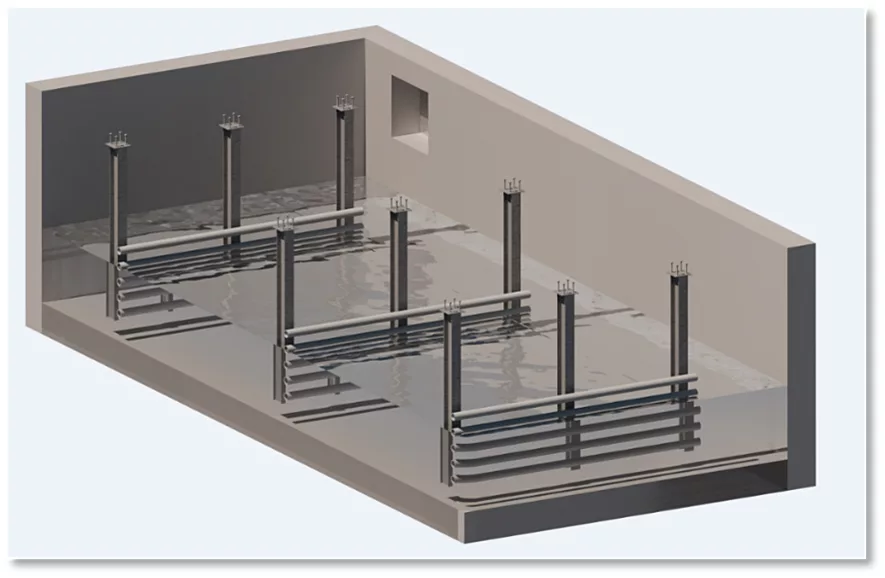A large, water-filled box near a high-rise rooftop can improve a building’s performance in high winds.
The beauty of a sloshing damper is its simplicity. With only a waterproof concrete box containing a series of PVC and steel slats, the water’s natural sloshing motion can be tuned to counteract the building’s sway. When the building moves left, the water sloshes right and pushes the building back towards the center. The slats gently reduce the water’s motion during each slosh cycle.

Winds move tall buildings. Most winds are modest, resulting in barely detectable wind motions. However, winter and spring can bring intense storms and strong winds, making all but the best buildings perceptibly sway and even audibly “groan.”
A careful review of wind performance is essential to design at MKA. Sixty years of accumulated wind tunnel experience and design tool development give us powerful insight into wind-vulnerable projects. We will identify projects challenged by the wind during the Concept Phase or earlier with wind tunnel testing pinpointing building performance risks.
If a project responds unfavorably to wind, MKA works with the architect and the owner to assess various solutions. Enhanced damping is often the most cost-effective wind-management strategy.

A highly effective added-damping strategy involves placing a dedicated damping device near the building’s rooftop. Dampers come in several forms: Taiwan’s Taipei 101 employs pendulum dampers, New York City’s 432 Park enlists mass dampers, and Chicago’s 150 North Riverside engages water-based tuned liquid sloshing dampers—often, the most simple and cost-effective solutions.
MKA has incorporated tuned liquid sloshing dampers in projects for over 20 years, beginning with the Highcliff residential tower in Hong Kong and continuing with One Rincon in San Francisco, Rainier Square in Seattle, and NEMA, One Chicago, and St. Regis in Chicago.
Sloshing dampers have proved very popular within MKA projects due to their economy. Unlike other damping solutions, a general contractor can build tuned liquid sloshing dampers using traditional concrete, steel, and waterproofing labor. A case study for a Chicago residential high-rise found that adding sloshing dampers for a construction cost of $1.4 million saved just under $5 million relative to the next best wind management solution.
Want to Learn More?
Solving tough wind problems need not mean adding more structure. MKA is pleased to review, suggest, or advise architects and developers with wind management strategies. Please contact Russell Larsen, PE, SE, for further information.